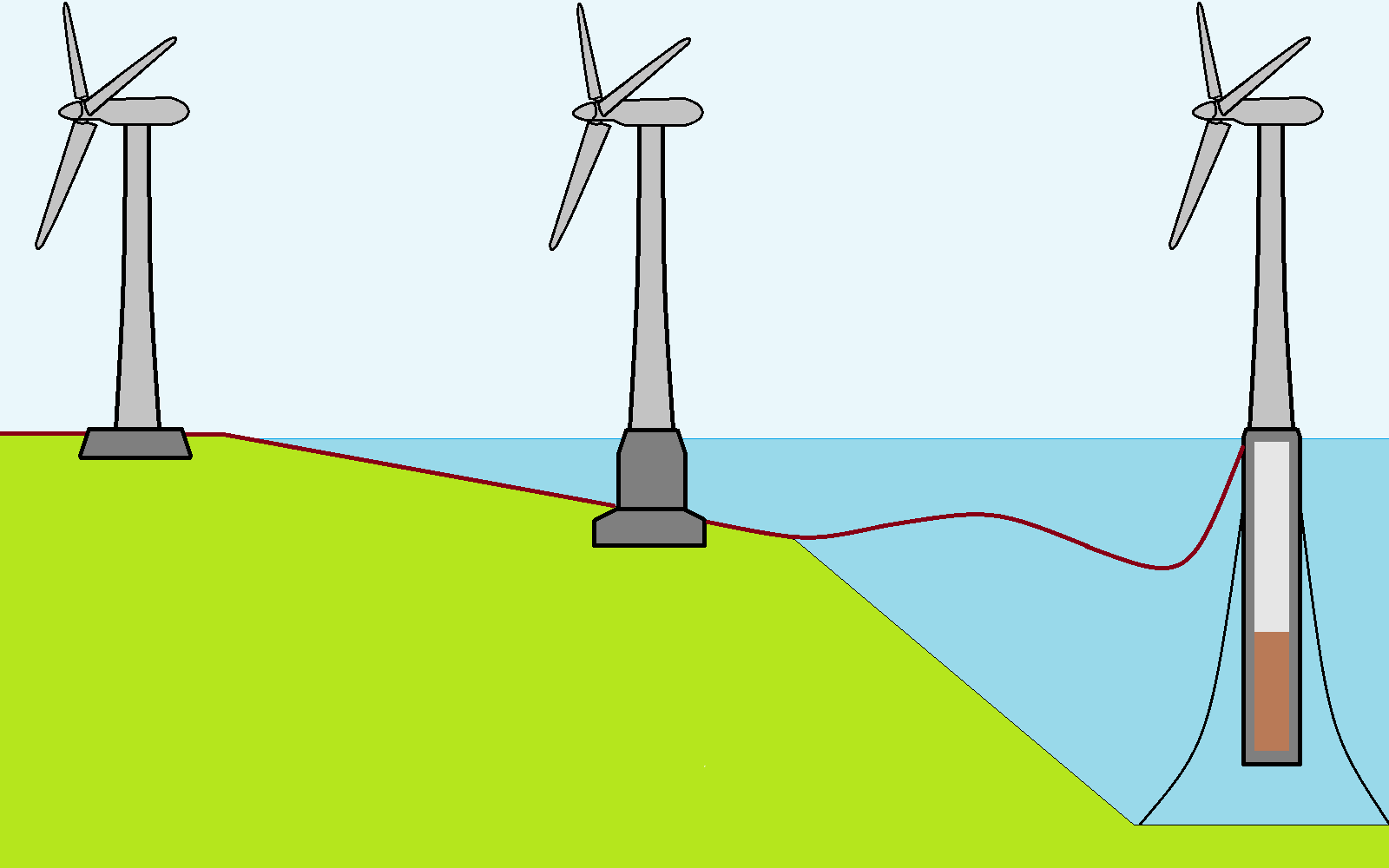Wind turbines
Published on 27 December 2021
Wind turbines convert the wind kinetic energy into electricity. They can be installed on land (on-shore) or at sea (off-shore), the latter being further split between near-shore (off-shore in shallow waters) and far-shore (off-shore in deep waters). The main reason for this classification is the difference in installation method and the potential in effective energy output.
A key aspect of electricity production from wind power is the difference between installed power and effective production. Contrary to some other electricity generation method like a nuclear powerplant, the installed power alone does not define the effective production. A 5 MW wind turbine might operate 2000 hours a year (h/y) in some places but 4000 h/y in others, leading to 10 and 20 GWh/y, respectively. In any case, no wind turbine will operate at full power for the 8760 hours of a complete year.
Beyond the economic and environmental (see Life Cycle Analysis) aspects of partial operation, the relation between windy conditions and electricity production also means that electricity is not produced when needed but when weather conditions are favourable. Electricity production from wind can therefore not be used as a standalone power source, unless some energy storage method is introduced.
Environmental impact
Wind turbines are a source of renewable electricity without any contamination or emissions during operation, except for the maintenance operations. Yet, their true environmental impact results from emissions during manufacturing (raw material extraction + conversion into parts), installation, maintenance and disposal.
Most emissions are linked to manufacturing or installation and are upfront emissions, meaning that almost all emissions are released before the wind turbine produces any electricity. Accordingly, the higher the effective production of electricity once in operation, the lower the emissions per produced kWh. This explains why the same wind turbine can be rated with effective emissions varying by a factor of up to 3 depending on its production site. A favourable wind farm location not only has a better power output, but also a better economic output (more power for the same investment) and a better environmental rating (more power for the same emissions, i.e. less emissions per produced kWh).
On-shore wind turbines have the lowest upfront emissions with a fairly straightforward concrete foundation and not much required resources for installation, maintenance or disposal. Near-shore wind turbines require more advanced foundations to withstand life in sea water, some additional cabling for electricity to reach the shore and more complex equipments for installation, maintenance and disposal. Far-shore wind turbines require floating installations to replace foundations, significantly more cabling, complex procedures for installation, maintenance and disposal, all of which including long distance transportation for men and materials.

Yet, improved capacity factor (see below) and turbine power output when increasing distance to shore mean a larger energy output, so that the carbon intensity of wind turbines is not necessarily the lowest on-shore where absolute upfront emissions are lowest. Range of carbon intensity for each type of installation is:
- On-shore: 7 to 21 equivalent-gCO2/kWh
- Near-shore: 8 to 23 equivalent-gCO2/kWh
- Far-shore: 16 to 38 equivalent-gCO2/kWh
Capacity Factor and local wind knowledge
The productivity of wind turbines is restricted by the duration of favourable wind conditions. This is expressed by the capacity factor, which is the ratio between the actual power output over a period of time (generally a year) and the theoretical maximum output over this same period. For example, 2500h of equivalent full load hours a year corresponds to a capacity factor of 28.5% (2500/8760).
Having a high capacity factor requires the selection of:
- a location with regular wind conditions
- a wind turbine that operates within the most frequent wind conditions

Median of regional distribution of average wind speed across Europe. Left: over land; Right: over sea
Wind conditions are generally more favourable over sea than over land, both in terms of wind speed and wind regularity (highest wind speed and highest frequency of windy conditions at sea far away from shoreline). This is one reason for the split of wind farm types into the on-shore, near-shore and far-shore categories. On-shore has the simplest installation process but the worst wind conditions (lowest speed, worst regularity). Far-shore has the most complex installation but the best wind conditions (highest speed, best regularity). Near-shore is a trade-off solution, limiting upfront emissions while delivering reasonable power output.
There is no simple way to define which of the three is the most environmental-friendly as this is largely dependent on the local wind conditions. In Europe alone, the conclusion might be totally different between Northern countries bordering the North Sea and Southern countries bordering the Mediterranean, given the very different wind conditions.
Towards more power output
The demand for ever more production and higher efficiency from wind turbines leads to higher and higher installations with longer blades in order to exploit the more regular wind flow and higher average wind speed at greater heights.
The more regular wind conditions and overall higher wind speed over see than over land explains the trend towards off-shore wind turbines. They also have less issues of competition with other land uses. Yet, off-shore location implies the use of more material to anchor the turbines as well as the addition of transmission cables to reach shore.
